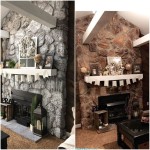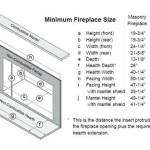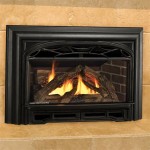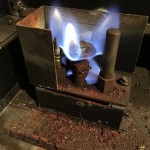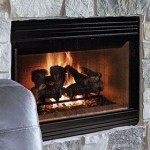Mantel For Fireplace Stone: A Comprehensive Guide
A fireplace mantel serves as a decorative and functional frame for a fireplace opening. It provides a visual anchor for the fireplace, often showcasing decorative items and offering a degree of protection from the heat and soot generated by the fire. When selecting a mantel for a stone fireplace, considerations of material, style, size, and installation are paramount.
Stone fireplaces offer a unique aesthetic, often conveying a sense of rustic charm, timeless elegance, or modern sophistication, depending on the type of stone used. The mantel chosen should complement the existing stonework, creating a cohesive and visually appealing focal point for the room.
Several materials are commonly used for fireplace mantels. Wood, with its warmth and versatility, remains a popular choice. Various species, from rustic reclaimed wood to finely finished hardwoods, can be used to create a mantel that complements the stone fireplace. The wood’s stain and finish can be tailored to match the surrounding décor.
Stone mantels offer another option, creating a unified and substantial look. Matching the mantel stone to the fireplace stone creates seamless integration, while contrasting stone types can add visual interest and depth. Popular choices include granite, marble, limestone, and slate, each offering unique colorations and textures.
Metal mantels, particularly cast iron or steel, provide a more industrial or contemporary aesthetic. These mantels can be designed with intricate details or simple lines, offering a striking contrast against the natural texture of the stone fireplace. Metal mantels can also be finished in a variety of colors and patinas to complement the overall design scheme.
Concrete mantels offer a modern and minimalist option. Their clean lines and customizable nature allow for seamless integration into contemporary fireplace designs. Concrete can be stained or painted to match the surrounding décor, offering design flexibility.
Choosing the appropriate mantel style is crucial for achieving a harmonious design. For rustic stone fireplaces, a rough-hewn wooden mantel or a natural stone mantel can enhance the rugged aesthetic. More refined stone fireplaces, such as those constructed with polished marble, might benefit from a more ornate wooden mantel or a sleek metal design.
The size of the mantel is another critical factor. The mantel should be proportionate to the fireplace opening and the surrounding wall space. A mantel that is too small can appear insignificant, while a mantel that is too large can overwhelm the space. Standard mantel dimensions typically extend several inches beyond the fireplace opening on either side and provide adequate depth for displaying decorative items.
Proper installation is essential for both safety and aesthetics. Mantels should be securely fastened to the wall, ensuring they can support their own weight and any decorative items placed upon them. Building codes often dictate specific clearances between the mantel and the firebox opening to minimize fire hazards. Consulting with a professional installer is recommended to ensure proper and safe installation.
Considerations for selecting a mantel for a stone fireplace often extend beyond the material and style. The overall design of the room, including the wall color, flooring, and furniture, should be taken into account. The mantel should complement these elements, creating a cohesive and visually appealing space.
Maintenance requirements also vary depending on the mantel material. Wood mantels may require periodic cleaning and polishing, while stone mantels might necessitate sealing to prevent staining. Metal mantels may require occasional repainting or refinishing to protect against rust or corrosion. Understanding the maintenance requirements of different mantel materials can help homeowners make informed decisions.
The budget allocated for the mantel should also be considered. Material costs can vary significantly, with some rare woods and exotic stones commanding higher prices. Installation costs can also add to the overall expense, particularly for complex installations or custom designs. Establishing a budget beforehand can help narrow down the options and ensure the project stays within financial constraints.
Exploring various design options and consulting with professionals can help homeowners choose the perfect mantel for their stone fireplace. Design resources, such as home improvement magazines, online galleries, and showrooms, offer a wealth of inspiration. Collaborating with architects, interior designers, or experienced contractors can provide valuable insights and ensure the final result meets the homeowner's aesthetic and functional needs.
Careful consideration of the factors outlined above ensures a well-chosen mantel that complements the stone fireplace and enhances the overall aesthetic of the room. The right mantel can transform a functional fireplace into a stunning focal point, adding character and warmth to the space. By carefully evaluating the material, style, size, and installation requirements, homeowners can select a mantel that will provide both beauty and functionality for years to come.

Magrahearth Natural Wood Concrete Mantel Fireplace Stone Patio

Magrahearth Natural Wood Concrete Mantel Fireplace Stone Patio

Barnwood Fireplace Mantel The Collection

Amhurst Cast Stone Fireplace Mantels Old World Stoneworks

How To Build And Hang A Mantel On Stone Fireplace Shanty 2 Chic

Fireplace Mantel Installation Before And After

Chiseled Stone Series 6 Mantel Grey Capo Fireside

Manhattan Cast Stone Fireplace Mantel Old World Stoneworks

Stone Fireplace Mantel Photos Ideas Houzz

Cast Stone Fireplaces So Much Better With Age
Related Posts

